 W
WPhotos is a photo management and editing application developed by Apple. It was released as a bundled app in iOS 8 on September 17, 2014—replacing the Camera Roll—and released as a bundled app to OS X Yosemite users in the 10.10.3 update on April 8, 2015. It was released for tvOS 10 on September 13, 2016.
 W
WApple Qmaster is a system made by Apple Inc. that provides automated work distribution and processing for high-volume projects created with certain digital visual effects software packages: Shake, Autodesk Maya, Final Cut Pro, Compressor, DVD Studio Pro and any UNIX command-line program. It processes such jobs on a cluster of Mac or Xserve computers.
 W
WAppleShare IP Migration is a utility by Apple Computer to import users and settings from the legacy AppleShare IP to Mac OS X Server. It is only installed on the server itself, and is found at /Applications/Server/AppleShare IP Migration.app. It is used by users or entities who had AppleShare Servers. It imports basic settings like DNS Servers, User Profiles, etc. The utility allows the users to import from a legacy system to a new server.
 W
WAppleWorks is an integrated office suite containing a word processor, database, and spreadsheet. It was developed by Rupert Lissner for Apple Computer, originally for the Apple II platform and launched in 1984, and was later reworked for the Macintosh platform.
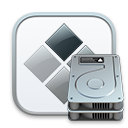 W
WBoot Camp Assistant is a multi boot utility included with Apple Inc.'s macOS that assists users in installing Microsoft Windows operating systems on Intel-based Macintosh computers. The utility guides users through non-destructive disk partitioning of their hard disk drive or solid state drive and installation of Windows device drivers for the Apple hardware. The utility also installs a Windows Control Panel applet for selecting the default boot operating system.
 W
WCarPlay is an Apple standard that enables a car radio or head unit to be a display and a controller for an iOS device. It is available on all iPhone models beginning with iPhone 5 running iOS 7.1 or later.
 W
WClang is a compiler front end for the C, C++, Objective-C and Objective-C++ programming languages, as well as the OpenMP, OpenCL, RenderScript, CUDA and HIP frameworks. It uses the LLVM compiler infrastructure as its back end and has been part of the LLVM release cycle since LLVM 2.6.
 W
WThe classic Mac OS is the series of operating systems developed for the Macintosh family of personal computers by Apple Inc. from 1984 to 2001, starting with System 1 and ending with Mac OS 9. The Macintosh operating system is credited with having popularized the graphical user interface concept. It was included with every Macintosh that was sold during the era in which it was developed, and many updates to the system software were done in conjunction with the introduction of new Macintosh systems.
 W
WCompressor is a video and audio media compression and encoding application for use with Final Cut Studio and Logic Studio on macOS. It can be used with Qmaster for clustering.
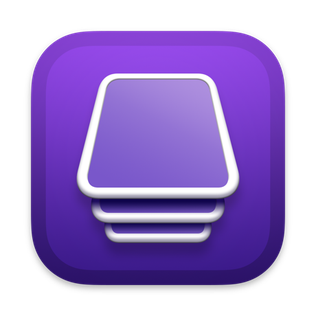 W
WApple Configurator is an application developed by Apple Inc. and is available for free download on the Mac App Store. It was first launched in March 2012. It replaces the iPhone Configuration Utility.
 W
WCUPS is a modular printing system for Unix-like computer operating systems which allows a computer to act as a print server. A computer running CUPS is a host that can accept print jobs from client computers, process them, and send them to the appropriate printer.
 W
WFinal Cut Pro is a series of non-linear video editing software programs first developed by Macromedia Inc. and later Apple Inc. The most recent version, Final Cut Pro 10.5, runs on Mac computers powered by macOS Mojave 10.14.6 or later. The software allows users to log and transfer video onto a hard drive, where it can be edited, processed, and output to a wide variety of formats. The fully rewritten Final Cut Pro X was introduced by Apple in 2011, with the last version of the legacy Final Cut Pro being version 7.0.3.
 W
WFinal Cut Pro, previously Final Cut Pro X, is a professional non-linear video editing application published by Apple Inc. as part of their Pro Apps family of software programs. It was released on June 21, 2011 for sale in the Mac App Store. It is the successor to Final Cut Pro. It was renamed "Final Cut Pro" in November 2020, coinciding with the release of macOS Big Sur.
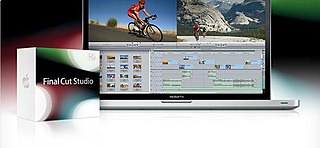 W
WFinal Cut Studio is a discontinued professional video and audio production suite for Mac OS X from Apple Inc., and a direct competitor to Avid Media Composer in the high-end movie production industry. It was developed from 2005 to 2011. Three of its primary applications - Final Cut Pro X, Motion, and Compressor - continue to be developed and are published as separate applications on the Mac App Store. The legacy boxed version of Final Cut Studio was last made available only through Apple's phone sales, and therefore not online or in Apple Stores. As of 2017, Final Cut Pro 7 no longer runs on macOS High Sierra or later.
 W
WFront Row is a discontinued media center software application for Apple's Macintosh computers and Apple TV for navigating and viewing video, photos, podcasts, and music from a computer, optical disc, or the Internet through a 10-foot user interface. The software relies on iTunes and iPhoto and is controlled by an Apple Remote or the keyboard function keys. The first version was released October 2005, with two major revisions since. Front Row was removed and discontinued in Mac OS X 10.7.
 W
WGarageBand is a line of digital audio workstations for macOS, iPadOS, and iOS devices that allows users to create music or podcasts. GarageBand is developed and sold by Apple for macOS, and is part of the iLife software suite, along with iMovie. Its music and podcast creation system enables users to create multiple tracks with pre-made MIDI keyboards, pre-made loops, an array of various instrumental effects, and voice recordings.
 W
WHomeKit is a software framework by Apple, made available in the IOS that lets users configure, communicate with, and control smart-home appliances using Apple devices. It provides users with a way to automatically discover such devices and configure them. By designing rooms, items, and actions in the HomeKit service, users can enable automatic actions in the house through a simple voice command to Siri or through the Home app. With HomeKit, developers are able to create complex applications in order to manage accessories at a high level. HomeKit is simply a communication protocol, which integrates and operates several types of accessories within the home.
 W
WiBooks Author (iBA) is an e-book authoring application by Apple Inc. Books created with iBooks Author export as ".ibooks" files and can be published to the Apple iBooks Store, or they may be exported as PDF.
 W
WiChat is a discontinued instant messaging software application developed by Apple Inc. for use on its Mac OS X operating system. It supported instant text messaging over XMPP/Jingle or OSCAR (AIM) protocol, audio and video calling, and screen-sharing capabilities. It also allowed for local network discussion with users discovered through Bonjour protocols.
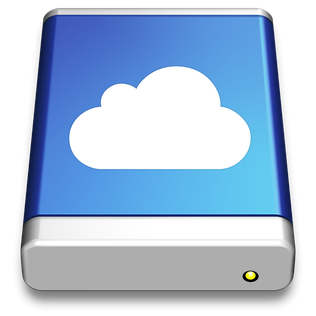 W
WiDisk is a file hosting service offered by Apple to all MobileMe members that enabled them to store their digital photos, films and personal files on-line so they could be accessed remotely. With a standard subscription, MobileMe users received a 20 GB iDisk.
 W
WiLife is a discontinued software suite for macOS and iOS developed by Apple Inc. It consists of various programs for media creation, organization, editing and publishing. It comprised: iTunes, iMovie, iPhoto, iDVD, iWeb and GarageBand. Only iMovie and GarageBand remain and are now sold separately on Apple's Mac App Store. iDVD and iWeb have been discontinued and iPhoto has been succeeded by Photos.
 W
WiTunes is a media player, media library, Internet radio broadcaster, mobile device management utility, and the client app for iTunes Store, developed by Apple Inc. It is used to purchase, play, download, and organize digital multimedia, on personal computers running the macOS and Windows operating systems, and can be used to rip songs from CDs, as well as play content with the use of dynamic, smart playlists. Options for sound optimizations exist, as well as ways to wirelessly share the iTunes library.
 W
WiTunes Radio was an Internet radio service by Apple Inc. that let users listen to automatically generated playlists based on direct input as well as collected data on music preferences. It was launched on September 18, 2013, as part of iOS 7 and was available in the Music app on iOS devices and Apple TV as well as in iTunes 11.1 on OS X and Windows. It was only available in the United States and Australia.
 W
WiWork is an office suite of applications created by Apple Inc. for its macOS and iOS operating systems, and also available cross-platform through the iCloud website.
 W
WThe Apple Loops Utility software was a small companion utility for Soundtrack Pro, GarageBand, Logic Express, and Logic Pro, all made by Apple Inc. that allowed users to create loops of audio that could be time-stretched. Audio files converted to Apple Loops via Apple Loops Utility could also be tagged with their publishing.
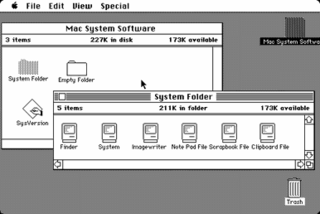 W
WThe family of Macintosh operating systems developed by Apple Inc. includes the graphical user interface-based operating systems it has designed for use with its Macintosh series of personal computers since 1984, as well as the related system software it once created for compatible third-party systems.
 W
WMacsBug is a low-level debugger for the classic Mac OS. MacsBug is an acronym for Motorola Advanced Computer Systems Debugger, as opposed to Macintosh debugger. The original version was developed by Motorola as a general debugger for its 68000 systems — it was ported to the Mac as a programmer's tool early in the project's development.
 W
WMainStage is a music application developed by Apple Inc. designed for use in live performance.
 W
WMotion is a software application produced by Apple Inc. for their macOS operating system. It is used to create and edit motion graphics, titling for video production and film production, and 2D and 3D compositing for visual effects.
 W
WOpenDoc is a defunct multi-platform software componentry framework standard created by Apple in the 1990s for compound documents, intended as an alternative to Microsoft's Object Linking and Embedding (OLE). As part of the AIM alliance between Apple, IBM, and Motorola, OpenDoc is one of Apple's earliest experiments with open standards and collaborative development methods with other companies—effectively starting an industry consortium. Active development was discontinued in March 1997.
 W
WApple Pascal is an implementation of Pascal for the Apple II and Apple III computer series. It's based on UCSD Pascal Just like other UCSD Pascal implementations, it ran on its own operating system.
 W
WApple Pay is a mobile payment and digital wallet service by Apple Inc. that allows users to make payments in person, in iOS apps, and on the web using Safari. It is supported on the iPhone, Apple Watch, iPad, and Mac. It digitizes and can replace a credit or debit card chip and PIN transaction at a contactless-capable point-of-sale terminal. It does not require Apple Pay-specific contactless payment terminals; it works with any merchant that accepts contactless payments. It adds two-factor authentication via Touch ID, Face ID, PIN, or passcode. Devices wirelessly communicate with point of sale systems using near field communication (NFC), with an embedded secure element (eSE) to securely store payment data and perform cryptographic functions, and Apple's Touch ID and Face ID for biometric authentication.
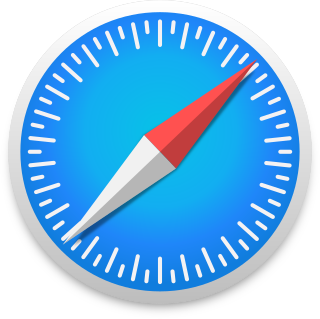 W
WSafari is a graphical web browser developed by Apple, based on the WebKit engine. First released on desktop in 2003 with Mac OS X Panther, a mobile version has been bundled with iOS devices since the iPhone's introduction in 2007. Safari is the default browser on Apple devices. A Windows version was available from 2007 to 2012.
 W
WSafari is a graphical web browser developed by Apple, based on the WebKit engine. First released on desktop in 2003 with Mac OS X Panther, a mobile version has been bundled with iOS devices since the iPhone's introduction in 2007. Safari is the default browser on Apple devices. A Windows version was available from 2007 to 2012.
 W
WSafari is a graphical web browser developed by Apple, based on the WebKit engine. First released on desktop in 2003 with Mac OS X Panther, a mobile version has been bundled with iOS devices since the iPhone's introduction in 2007. Safari is the default browser on Apple devices. A Windows version was available from 2007 to 2012.
 W
WShake is a discontinued image compositing package used in the post-production industry developed by Nothing Real for Windows and later acquired by Apple Inc. Shake was widely used in visual effects and digital compositing for film, video and commercials. Shake exposed its node graph architecture graphically. It enabled complex image processing sequences to be designed through the connection of effects "nodes" in a graphical workflow interface. This type of compositing interface allowed great flexibility, including the ability to modify the parameters of an earlier image processing step "in context". Many other compositing packages, such as Blender, Blackmagic Fusion, Nuke and Cineon, also used a similar node-based approach.
 W
WShazam is an American application owned by Apple Inc. The application can identify music, movies, advertising, and television shows, based on a short sample played and using the microphone on the device. The software is available for Android, macOS, iOS, and watchOS.
 W
WSiri, is a virtual assistant that is part of Apple Inc.'s iOS, iPadOS, watchOS, macOS, and tvOS operating systems. The assistant uses voice queries, gesture based control, focus-tracking and a natural-language user interface to answer questions, make recommendations, and perform actions by delegating requests to a set of Internet services. The software adapts to users' individual language usages, searches, and preferences, with continuing use. Returned results are individualized.
 W
WSK8 was a multimedia authoring environment developed in Apple's Advanced Technology Group from 1988 until 1997. It was described as "HyperCard on steroids", combining a version of HyperCard's HyperTalk programming language with a modern object-oriented application platform. The project's goal was to allow creative designers to create complex, stand-alone applications. The main components of SK8 included the object system, the programming language, the graphics and components libraries, and the Project Builder, an integrated development environment.
 W
WThe Squeak programming language is a dialect of Smalltalk. It is object-oriented, class-based, and reflective.
 W
WSwift Playgrounds is an educational tool and development environment for the Swift programming language developed by Apple Inc, initially announced at the WWDC 2016 conference. It was introduced as an iPad application alongside iOS 10, with a macOS version introduced in February 2020. It is available for free via Apple's App Store for iPadOS and Mac App Store for macOS.
 W
WWeather is a preinstalled mobile app on iPod Touch and iPhone since 2008. It has been bundled with iOS since iPhone OS 1.
 W
WWebObjects is a Java web application server and a server-based web application framework originally developed by NeXT Software, Inc. As of 2009 the software has been independently maintained by a volunteer community.
 W
WXgrid is a proprietary program and distributed computing protocol developed by the Advanced Computation Group subdivision of Apple Inc that allows networked computers to contribute to a single task.
 W
WXsan is Apple Inc.'s storage area network (SAN) or clustered file system for macOS. Xsan enables multiple Mac desktop and Xserve systems to access shared block storage over a Fibre Channel network. With the Xsan file system installed, these computers can read and write to the same storage volume at the same time. Xsan is a complete SAN solution that includes the metadata controller software, the file system client software, and integrated setup, management and monitoring tools.